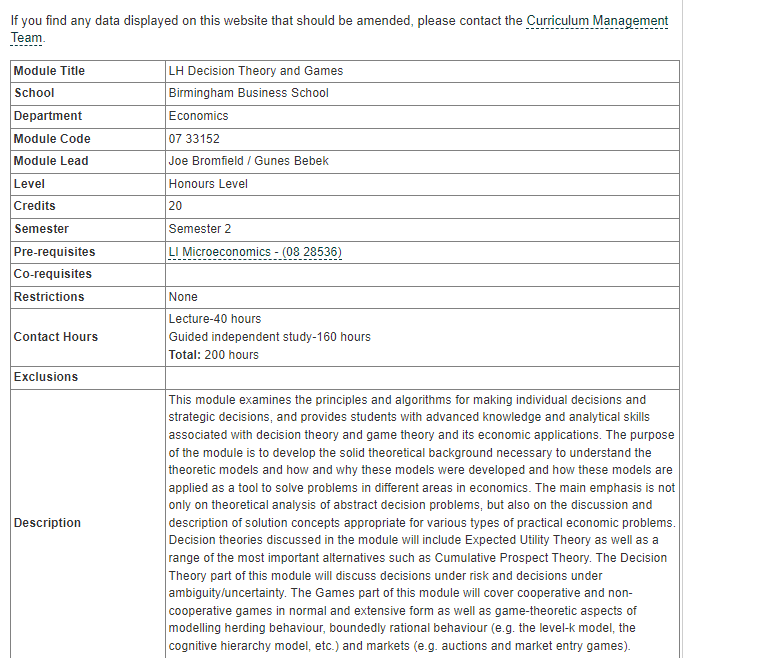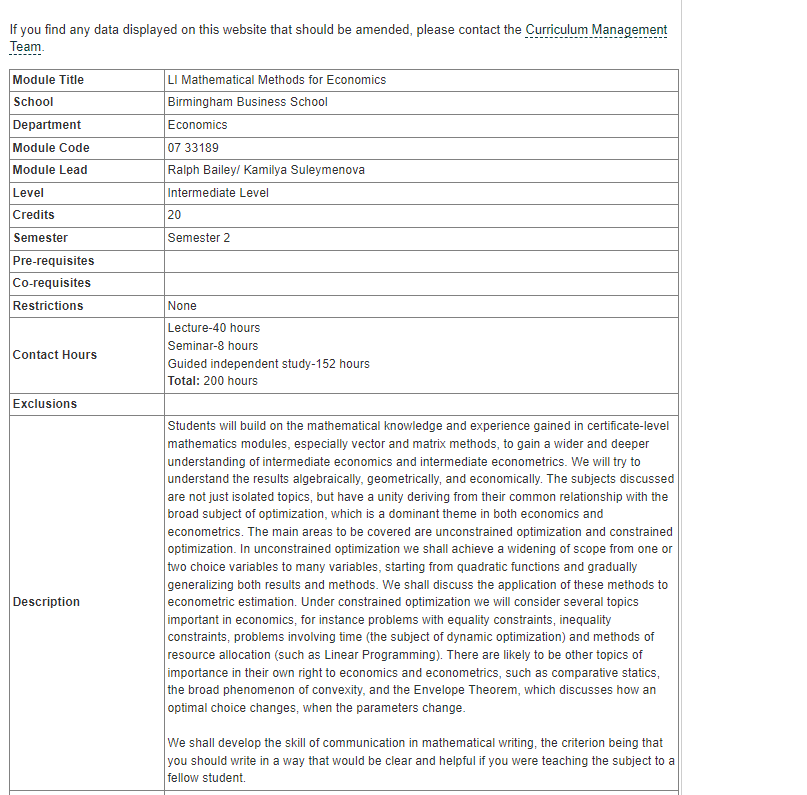Assignment-daixieTM为您提供剑桥大学University of Cambridge Partial differential equations and variational methods 4M12偏微分方程和变分方法代写代考和辅导服务!
Instructions:
Partial differential equations (PDEs) are mathematical equations that involve functions of several variables, and their partial derivatives. They arise in many areas of mathematics, science, and engineering, and are used to describe a wide range of phenomena, from fluid dynamics to quantum mechanics.
Variational methods are a powerful tool for studying PDEs. They involve the minimization of a functional, which is a function of a function, subject to certain constraints. In the context of PDEs, variational methods are used to find solutions that minimize or maximize some quantity of interest, such as energy or entropy.
One example of a PDE that can be studied using variational methods is the heat equation, which describes the distribution of heat in a system over time. By finding the function that minimizes the energy associated with the system, one can obtain a solution to the heat equation.
Variational methods are also used in the study of elasticity, where they can be used to find the deformation of an elastic material under various conditions. In this context, the functional being minimized is often the elastic potential energy of the system.
Overall, the combination of PDEs and variational methods is a powerful tool for understanding complex systems in mathematics, science, and engineering.

Internal waves in a rotating, stratified ocean are governed by the wave-like equation $$ \frac{\partial^2}{\partial t^2} \nabla^2 u_z+(2 \Omega)^2 \frac{\partial^2 u_z}{\partial z^2}+N^2\left(\frac{\partial^2 u_z}{\partial x^2}+\frac{\partial^2 u_z}{\partial y^2}\right)=0, $$ where $u_z$ is the vertical velocity, $z$ the vertical coordinate, $\Omega$ the rotation rate, and the constant $N$ is a measure of the strength of the stratification. (i) Show that the dispersion relationship takes the form $$ \varpi^2=N^2+f(N, \Omega) \frac{k_z^2}{k^2} $$ where $k=|\mathbf{k}|$. Find the function $f(N, \Omega)$. $[15 \%]$
(i) To obtain the dispersion relationship, we start by assuming a solution of the form
$u_z(\mathbf{x}, t)=\tilde{u}_z e^{i(\mathbf{k} \cdot \mathbf{x}-\omega t)}$,
where $\mathbf{k}$ is the wave vector and $\varpi$ is the frequency. Substituting this into the wave-like equation yields
$-\varpi^2 \tilde{u}_z \nabla^2 e^{i(\mathbf{k} \cdot \mathbf{x}-\varpi t)}+(2 \Omega)^2 \tilde{u}_z \frac{\partial^2}{\partial z^2} e^{i(\mathbf{k} \cdot \mathbf{x}-\varpi t)}+N^2 \tilde{u}_z\left(\frac{\partial^2}{\partial x^2}+\frac{\partial^2}{\partial y^2}\right) e^{i(\mathbf{k} \cdot \mathbf{x}-\varpi t)}=0$
Using the identity $\nabla^2 e^{i(\mathbf{k} \cdot \mathbf{x}-\varpi t)}=-k^2 e^{i(\mathbf{k} \cdot \mathbf{x}-\varpi t)}$, where $k=|\mathbf{k}|$, we obtain
$\varpi^2=k^2\left[(2 \Omega)^2 \frac{k_z^2}{k^2}+N^2\left(\frac{k_x^2+k_y^2}{k^2}\right)\right]=N^2 k^2+f(N, \Omega) \frac{k_z^2}{k^2}$,
where $f(N,\Omega)=(2\Omega)^2/N^2$.
In well mixed regions of the oceans we may take $N=0$. (i) In such cases, show that the group velocity takes the form $$ \mathbf{c}_g= \pm 2 \Omega G\left(k_x, k_y, k_z\right) $$ and find the function $G\left(k_x, k_y, k_z\right)$.
In the context of ocean waves, $N$ is the Brunt-Väisälä frequency, which characterizes the stability of the water column with respect to vertical displacements. In well-mixed regions of the ocean, the water column is relatively homogeneous and stable, so $N$ can be assumed to be zero.
(i) In this case, the dispersion relation for gravity waves simplifies to
$\omega^2=g k$,
where $k = \sqrt{k_x^2 + k_y^2 + k_z^2}$ is the wavenumber and $\omega$ is the frequency. The group velocity is given by
$\mathbf{c}_g=\frac{\partial \omega}{\partial \mathbf{k}}$
Taking the derivative of the dispersion relation with respect to each component of $\mathbf{k}$, we obtain
$\frac{\partial \omega}{\partial k_x}=\frac{g k_x}{\sqrt{k_x^2+k_y^2+k_z^2}}=\frac{\omega k_x}{k}, \quad \frac{\partial \omega}{\partial k_y}=\frac{\omega k_y}{k}, \quad \frac{\partial \omega}{\partial k_z}=\frac{\omega k_z}{k}$.
Therefore, the group velocity is given by
$\mathbf{c}_g=\frac{\omega}{k} \mathbf{k}= \pm \sqrt{\frac{g}{k} \mathbf{k}}= \pm 2 \Omega G\left(k_x, k_y, k_z\right) \mathbf{k}$
where we have defined
$G\left(k_x, k_y, k_z\right)=\frac{1}{2 \sqrt{k_x^2+k_y^2+k_z^2}}$.
(ii) A wave generator of fixed frequency is placed in a well-mixed region of the ocean. Sketch the dispersion pattern for $\varpi<<\Omega$ and $\varpi=3 \Omega$, explaining why the patterns take the forms they do.
(ii) For $\omega \ll \Omega$, the dispersion relation becomes
$\omega=\sqrt{\frac{g}{k}} \approx \sqrt{\frac{g}{k_z}}$
since the vertical wavenumber $k_z$ dominates in this limit. This implies that the phase velocity $c_p = \omega/k$ is independent of the horizontal wavenumbers $k_x$ and $k_y$. Therefore, the dispersion pattern is a set of concentric circles centered at the origin, with the radius given by $\omega/c_p = \sqrt{g/k_z}$.
For $\omega = 3\Omega$, we can use the dispersion relation
$\omega^2=g k$
to find the wavenumber $k$ for a given frequency $\omega$. We have
$k=\frac{\omega^2}{g}=9 \frac{\Omega^2}{g}$
Substituting this into the expression for $G(k_x,k_y,k_z)$, we obtain
$G\left(k_x, k_y, k_z\right)=\frac{1}{6 \sqrt{\left(k_x^2+k_y^2+k_z^2\right)\left(\Omega^2 / g\right)}}$.
This expression shows that the function $G$ depends on all three components of $\mathbf{k}$, so the dispersion pattern is not a simple set of circles. However, we can make some qualitative observations. Since $G$ decreases as $k$ increases, the waves with the largest wavenumbers will have the smallest group velocities. Moreover, since $G$ depends on the square root of $k_x^2+k_y^2+k_z^2$, the waves with the largest horizontal wavenumbers









